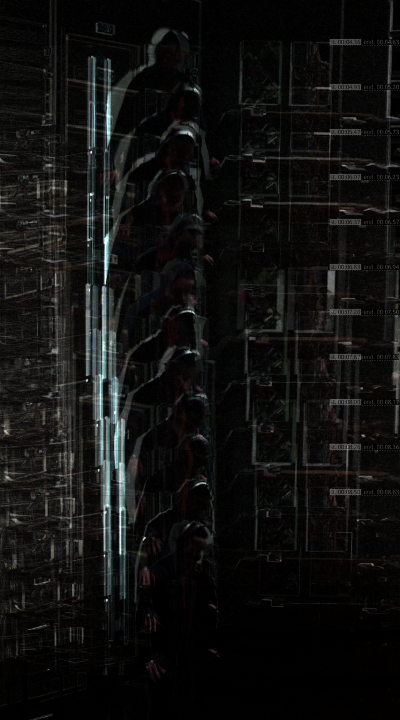
Spallanzani Watches the Walker is a performance that works through relationships between changing urban space, the experimental study of life and inaudible acoustic ecologies. It starts by creating a detailed sonification of the data gathered during an exploratory bat walk.
Bat walking is a practice of walking at night with an ultrasound detector in order to locate bats in both rural and urban locations. The detector tranlsates the ultrasonic echolocation of bats into calls audible to humans. It can be carried out systematically to build datasets, in groups as public engagement events, and by hobbyists and enthusiasts.
Performance
For the performance, GPS data collected from a strange solitary batwalk is sonified by using a music progamming language to translate the data into sine waves, pitch and panning. However, the audience are prevented from actually hearing this sonifcation at all.
Instead, only the performer is able to listen to the sound, transmitted to them via headphones. This removal places the audience outside of the cognitive and affective loop the performer is inside and reacting to. Added to this is a loose experimental apparatus reflecting on both contemporary bat detection and the early scientific work of Spallanzani and Jurine. These two scientists cut off or destroyed elements of bats sensory apparatus and then had them fly between bells on wire to see if they would strike them – thus attempting to discover how bats see in the dark.
In place of the hanging bells used by the scientists, coins, keys and jewellery are added to the perfomer’s body. All these objects are carried on nightwanders, all of which can generate sound at frequencies above human hearing.
The audience are provided with heterodyne bat detectors, which allow the audience to ‘tune in’ to the ultrasonic cacophony generated by the coins, keys and jewellery. As the body shakes and moves according to the sonified GPS, we may imagine some understanding of what the perfomer is perceiving and reacting to, or we might admit this is too difficult to judge or imagine. At the same time, the performer may make new connections between the data, the memory of the experience and the situation it was extracted, set against the experience of being made to perform it under observation.
Analysis
Two visual analyses of the movements during the initial performance at City Lit have been paired with parallel sonic distortions of the performance, alongside a cut out text that seeks to bring out the affective meaning and discursive context of the piece. Between them, the GPS data from which the performance is derived is juxtaposed with the performance audio – slowed down to the timings recorded in the data itself. This work features in Flee Immediately 2: Dance and Code.. I’m now working on redeveloping this as both as a new performance and participatory events.